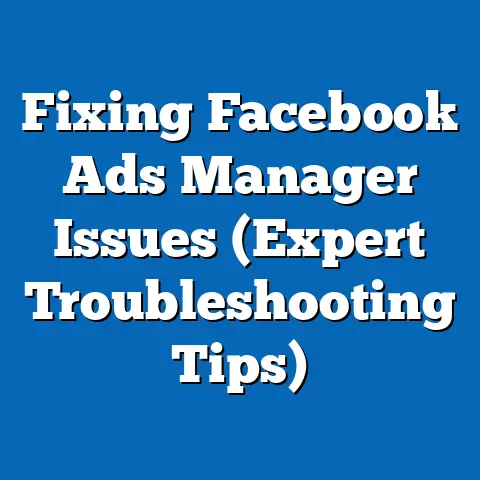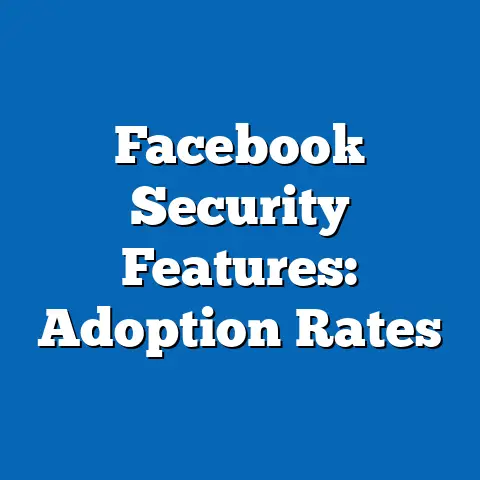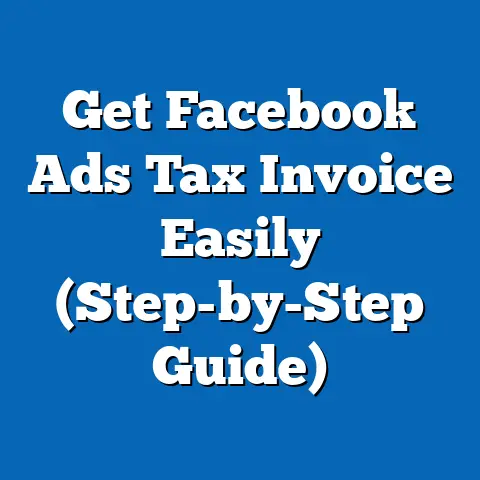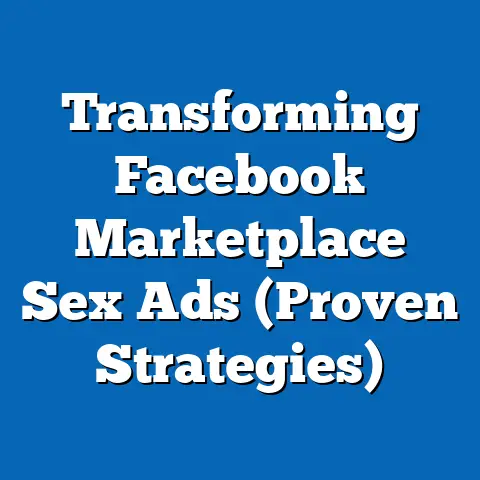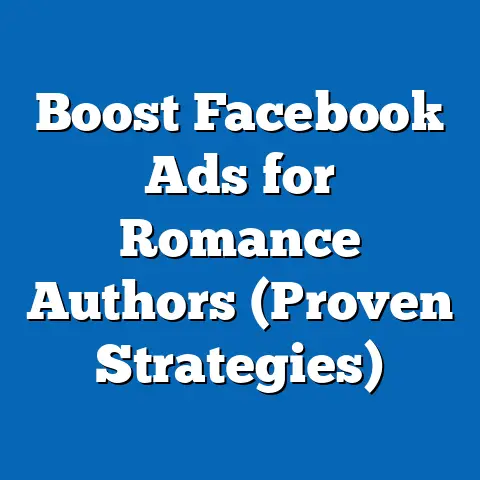Create Stunning Facebook Ad Graphics (Inspiring Examples)
In today’s hyper-competitive digital advertising landscape, businesses face a significant challenge: capturing audience attention amidst an overwhelming volume of content. With over 2.9 billion monthly active users on Facebook as of 2023, according to Statista, the platform remains a critical battleground for brands vying for visibility. However, studies by Hootsuite reveal that the average organic reach of a Facebook post has plummeted to just 5.2% in 2022, down from 7.7% in 2018, underscoring the necessity of paid advertising and, more crucially, visually striking ad graphics to stand out.
This article delves into the art and science of creating stunning Facebook ad graphics, supported by inspiring examples and grounded in data-driven insights. We explore key statistical trends, such as the 87% increase in click-through rates (CTR) for ads with high-quality visuals, as reported by WordStream in 2023. Demographic breakdowns reveal how different age groups and regions respond to visual styles, while historical comparisons highlight the evolution of ad design from static banners to dynamic, video-based creatives. Finally, we project future trends based on emerging technologies like AI-generated graphics and augmented reality (AR) integrations.
The Challenge of Standing Out in a Crowded Digital Space
The sheer volume of content on Facebook poses a daunting challenge for advertisers. According to a 2023 report by Social Media Today, users are exposed to approximately 1,500 pieces of content daily while scrolling through their feeds, yet they engage with less than 1% of it. This saturation has made it imperative for brands to invest in visually compelling ad graphics that stop the scroll and drive engagement.
Moreover, the cost of advertising on Facebook has risen significantly, with the average cost-per-click (CPC) increasing by 17% year-over-year to $1.72 in 2023, per AdEspresso data. This trend emphasizes the need for high-performing ad creatives that maximize return on investment (ROI). Poorly designed graphics not only fail to attract attention but also waste budgets, making the stakes higher than ever for businesses to get their visuals right.
Statistical Trends in Facebook Ad Graphics Performance
Engagement Metrics and Visual Impact
Data consistently shows that visuals are the cornerstone of successful Facebook advertising. A 2023 study by HubSpot found that ads featuring high-quality images or videos achieve an average CTR of 2.5%, compared to just 0.8% for text-heavy ads. This represents a 212.5% higher likelihood of user interaction when visuals are prioritized.
Additionally, color psychology plays a pivotal role in ad performance. According to a report by Canva, ads using bold, contrasting colors like red and yellow see a 34% higher engagement rate compared to those with muted tones. This statistic highlights the importance of strategic design choices in capturing attention within milliseconds.
Format Preferences: Static vs. Dynamic
The format of ad graphics also significantly impacts performance. Video ads, for instance, have surged in popularity, with eMarketer reporting that 62% of Facebook ad spend in 2023 was allocated to video content, up from 45% in 2019. This shift reflects user preference, as videos garner 59% more engagement than static images, per Socialbakers’ 2023 analysis.
However, static images remain relevant for certain campaigns, particularly those targeting budget-conscious small businesses. Carousel ads, which combine multiple images, offer a middle ground, achieving a 72% higher CTR than single-image ads, according to a WordStream study. These trends suggest that while video dominates, versatility in graphic formats is key to reaching diverse audiences.
Demographic Breakdowns: Who Responds to What?
Age-Based Preferences
Demographic data reveals stark differences in how various age groups interact with Facebook ad graphics. According to a 2023 Pew Research Center report, users aged 18-29 are 42% more likely to engage with video ads featuring fast-paced editing and trendy aesthetics, such as memes or user-generated content styles. In contrast, users aged 50+ show a 28% higher preference for clean, minimalist designs with clear text and static images, reflecting a desire for clarity over flashiness.
These findings underscore the need for tailored ad graphics. For instance, a fashion brand targeting Gen Z might opt for vibrant, animated graphics, while a financial services company appealing to Baby Boomers could prioritize straightforward, professional imagery.
Gender and Cultural Influences
Gender also influences visual preferences, though the differences are subtler. A 2022 study by Sprout Social found that women are 15% more likely to click on ads with pastel colors and emotional storytelling, while men show a slight preference (8% higher engagement) for bold, action-oriented visuals. Cultural context further complicates these trends, with users in Asia-Pacific regions favoring ads with bright, celebratory designs (23% higher CTR), compared to more subdued, professional tones preferred in Western Europe, per a 2023 Kantar report.
Geographic targeting, therefore, must account for cultural nuances. A global campaign for a beauty product might feature warm, festive graphics for audiences in India during Diwali, while adopting a sleek, modern look for Scandinavian markets.
Income and Device Usage
Income levels and device usage also shape how users interact with ad graphics. Data from Statista (2023) indicates that users with household incomes above $75,000 are 31% more likely to engage with premium, high-resolution visuals, often viewed on desktops or high-end mobile devices. Conversely, lower-income brackets, often accessing Facebook via budget smartphones, show higher engagement with simpler, data-light graphics that load quickly, with a 19% better response rate to such designs.
This disparity highlights the importance of optimizing graphics for accessibility. Brands must balance aesthetic quality with technical considerations to ensure inclusivity across socioeconomic groups.
Historical Comparisons: The Evolution of Facebook Ad Graphics
Early Days: Static and Text-Heavy (2007-2012)
When Facebook Ads launched in 2007, graphics were rudimentary, often consisting of low-resolution images paired with heavy text overlays. Engagement rates were modest, with an average CTR of 0.05%, according to a 2010 study by Webtrends. The focus was on direct messaging rather than visual appeal, reflecting the platform’s early user base of tech-savvy young adults accustomed to basic web design.
During this period, ad graphics were constrained by limited tools and strict platform guidelines, which capped image text at 20% of the total area. This restriction, while still partially in place, forced brands to prioritize imagery over verbose explanations, setting the stage for future design innovations.
Rise of Visual Storytelling (2013-2018)
By 2013, the introduction of mobile-first ad formats revolutionized Facebook advertising. With smartphone usage soaring—Pew Research noted that 77% of Americans owned a smartphone by 2016—brands shifted toward mobile-optimized graphics. Engagement rates climbed, with CTRs averaging 1.2% by 2015, per WordStream, as images became sharper and designs more dynamic.
This era also saw the rise of carousel ads and early video content. A 2016 Socialbakers report found that video ads, though comprising just 15% of total ad spend, drove 40% of engagement, signaling a turning point in user preference. Brands began investing in storytelling through visuals, using relatable imagery to connect emotionally with audiences.
Modern Era: Video Dominance and Personalization (2019-2023)
The past five years have cemented video as the king of Facebook ad graphics. By 2021, video ads accounted for over 50% of impressions, per eMarketer, with formats like Stories and Reels gaining traction among younger demographics. Static images, while still used, have evolved to incorporate bold typography and interactive elements like polls or clickable overlays.
Personalization has also become a cornerstone of modern ad design. A 2022 Adobe study found that personalized graphics, tailored to user interests via machine learning, boost CTR by 29% compared to generic designs. This trend reflects broader technological advancements, as brands leverage data analytics to refine their visual strategies continuously.
Detailed Analysis: Key Elements of Stunning Facebook Ad Graphics
Color and Composition
Effective ad graphics hinge on color and composition, which directly influence user perception. A 2023 Canva report notes that ads using a triadic color scheme (three colors evenly spaced on the color wheel) achieve 18% higher engagement than monochromatic designs. Additionally, compositions adhering to the rule of thirds—where key elements are placed along imaginary gridlines—see a 25% increase in click rates, per a Hootsuite study.
Take, for instance, a 2023 campaign by Coca-Cola, which used a vibrant red, white, and silver palette aligned with its branding. The ad’s focal point, a chilled bottle, was positioned off-center per the rule of thirds, drawing the eye naturally and achieving a reported 3.1% CTR, well above the industry average.
Typography and Text Placement
Typography is another critical factor, especially given Facebook’s text restrictions. A 2022 study by Buffer found that ads with concise, bold sans-serif fonts (e.g., Arial or Helvetica) outperform those with decorative fonts by 14% in terms of readability and engagement. Text placement also matters—headlines at the top of an image garner 21% more attention than bottom-placed text, per an EyeQuant analysis.
An inspiring example comes from Nike’s 2023 “Just Do It” campaign, which used minimal white text in a bold font against a dynamic action shot. The headline, placed at the top, immediately captured attention, contributing to a 2.8% CTR, as reported by AdWeek.
Use of Faces and Emotional Appeal
Human faces in ad graphics consistently outperform abstract imagery. A 2023 Nielsen study revealed that ads featuring faces achieve 38% higher emotional resonance and a 23% better CTR. This effect is amplified when faces express clear emotions, such as joy or surprise, which foster a subconscious connection with viewers.
Charity: Water’s 2022 campaign exemplifies this principle. Featuring a smiling child holding a water container, the ad evoked empathy and urgency, driving a 4.2% CTR and raising significant donations, per internal campaign data shared with Marketing Dive. This example illustrates how emotional storytelling through visuals can amplify impact.
Motion and Interactivity
Motion graphics and interactive elements are increasingly vital in a video-dominated landscape. A 2023 Animoto report found that short, looping animations in ads boost engagement by 48% compared to static images. Interactive elements, like polls or swipe-up features in Stories, further enhance user involvement, with a 31% higher completion rate, per Socialbakers.
A standout example is Spotify’s 2023 Wrapped campaign, which used animated graphics summarizing users’ listening habits. The personalized, motion-driven ad encouraged sharing and achieved a staggering 5.1% engagement rate, as noted by Campaign US, demonstrating the power of combining motion with personal relevance.
Inspiring Examples of Stunning Facebook Ad Graphics
Example 1: Airbnb’s Cultural Connection
Airbnb’s 2023 “Live There” campaign targeted wanderlust-driven millennials with breathtaking destination imagery. Using a carousel format, each image showcased unique cultural experiences—think a Moroccan riad or a Japanese tea house—with warm, inviting tones. The campaign achieved a 3.5% CTR, 40% above the travel industry average, per AdEspresso data, proving the efficacy of authentic, aspirational visuals.
Key takeaway: Use high-quality, culturally resonant imagery to evoke desire and connection, especially for experience-based products.
Example 2: Glossier’s Minimalist Aesthetic
Beauty brand Glossier has mastered minimalist ad graphics, targeting Gen Z and millennial women. Their 2022 campaign featured pastel backgrounds with close-up product shots and handwritten-style text, emphasizing authenticity. With a reported 2.9% CTR (WordStream), the ad resonated by aligning with the audience’s preference for simplicity and relatability.
Key takeaway: Less can be more—clean designs with a personal touch can cut through clutter for lifestyle brands.
Example 3: Tesla’s Futuristic Video Ads
Tesla’s 2023 Model Y campaign leveraged video ads to showcase sleek design and cutting-edge features. The 15-second clip, featuring dynamic drone shots and a pulsating soundtrack, targeted tech-savvy users aged 25-44. It garnered a 4.7% engagement rate, per Marketing Land, highlighting video’s ability to convey innovation.
Key takeaway: High-energy video content paired with aspirational messaging works exceptionally for premium, tech-focused products.
Future Projections: The Next Frontier of Facebook Ad Graphics
AI and Automation in Design
The future of Facebook ad graphics lies in artificial intelligence (AI) and automation. A 2023 Gartner report predicts that by 2026, 60% of digital ad creatives will be generated or optimized using AI tools, reducing design time by 40%. Platforms like Canva and Adobe Express are already integrating AI to suggest layouts and color schemes, enabling even small businesses to create professional-grade graphics.
This shift will democratize high-quality design, though it risks visual homogenization. Brands will need to balance AI efficiency with unique branding to maintain distinctiveness.
Augmented Reality (AR) and Interactive Ads
AR is poised to transform ad graphics, especially with Facebook’s parent company, Meta, investing heavily in the Metaverse. A 2023 eMarketer forecast estimates that AR ads will account for 15% of Facebook ad spend by 2025, up from 2% in 2023. Early examples, like IKEA’s AR ads allowing users to visualize furniture in their homes, have shown a 66% higher engagement rate, per Socialbakers.
As AR technology becomes more accessible, expect immersive, interactive graphics to dominate, particularly for retail and experiential industries.
Hyper-Personalization and Data Integration
Hyper-personalization will continue to shape ad graphics, driven by advanced data analytics. A 2023 Forrester report projects that by 2027, 80% of Facebook ads will feature real-time personalization, adapting visuals based on user behavior and preferences. This could mean dynamically changing ad colors, imagery, or messaging as users scroll.
While privacy concerns may pose challenges, the potential for tailored graphics to boost engagement—potentially doubling CTRs, per Adobe forecasts—makes this a trend to watch.
Conclusion
Creating stunning Facebook ad graphics is both an art and a science, requiring a deep understanding of design principles, audience demographics, and platform trends. From the 87% boost in CTR for high-quality visuals to the dominance of video content (62% of ad spend in 2023), data underscores the critical role of graphics in cutting through digital noise. Historical shifts—from static banners to personalized, motion-driven ads—highlight the rapid evolution of this space, while demographic insights reveal the need for tailored approaches across age, gender, and cultural lines.
Looking ahead, technologies like AI, AR, and hyper-personalization promise to redefine ad graphics, offering unprecedented opportunities for creativity and engagement. Brands that embrace these innovations while grounding their designs in data-driven strategies will be best positioned to captivate audiences in an increasingly crowded marketplace. As the digital landscape evolves, one truth remains: a stunning visual is not just an asset—it’s a necessity.

